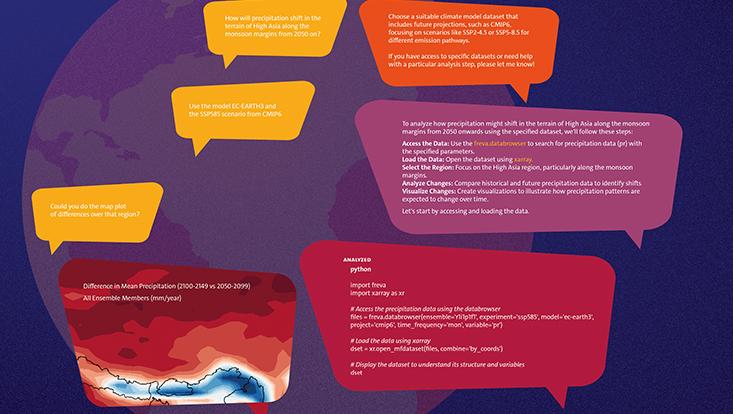Central African Republic’s Path to Peace: Rebel Factions Disarm Amid Renewed Hope
In a landmark development, multiple armed groups in the Central African Republic (CAR) have committed to disarmament, signaling a hopeful turning point in the nation’s enduring quest for peace. This breakthrough follows the ratification of a comprehensive peace accord designed to stabilize a country long destabilized by violent clashes and political unrest. As former adversaries shift from confrontation toward dialogue, there is growing cautious optimism among analysts and local communities alike that this could herald an era of reconciliation and reconstruction. This article delves into the significance of this agreement, responses from government officials and civil society actors, as well as the obstacles that remain on CAR’s journey toward lasting peace.
Disarmament by Rebel Groups Ushers in New Prospects for Stability
The recent commitment by rebel factions across CAR to relinquish their weapons represents a critical step forward after years of conflict that have devastated communities nationwide. The newly signed peace treaty has encouraged these groups to embrace peaceful solutions over armed resistance, reflecting an unprecedented willingness to resolve disputes through negotiation rather than violence. Both national authorities and international observers are cautiously optimistic about this shift, recognizing its potential to catalyze essential reforms and facilitate post-conflict recovery.
This newfound readiness for disarmament stems from several key factors:
- Global Diplomatic Engagement: Persistent advocacy by international organizations and foreign governments has created pressure conducive to dialogue.
- Grassroots Involvement: Active participation of local leaders underscores an understanding that sustainable peace must be grounded in community consensus.
- Sustainable Reintegration Incentives: Promises of socio-economic support‚ÄĒincluding vocational training programs and access to education‚ÄĒhave motivated combatants toward laying down arms.
The success of disarmament hinges on transparent implementation processes overseen by government agencies working closely with civil society groups and international partners. Ensuring that ex-combatants receive meaningful opportunities will be vital for preventing relapse into violence. For instance:
| Former Militant Group | Status of Disarmament | Community Reintegration Initiatives |
|---|---|---|
| Mbandja Coalition | Complete Weapon Surrender | Agricultural Skills Training & Microfinance Access |
| Kara Frontline Fighters | Partial Disarmament Ongoing | Civic Education & Literacy Programs |
| Lomé Peace Advocates | Tactical Dialogue Engagements Underway | Mental Health Support Services Expansion |
Navigating Complex Challenges Toward Enduring Peace in CAR’s Fragmented Landscape
The ceasefire agreements mark only the beginning; transforming temporary truces into durable political stability remains fraught with challenges rooted deeply within CAR’s social fabric. Persistent mistrust between ethnic communities continues to undermine cooperation efforts while fragile governance institutions struggle with corruption and inefficiency‚ÄĒfactors historically exploited by external actors seeking influence through proxy conflicts or resource control.
A holistic approach is imperative‚ÄĒone which addresses not only security concerns but also underlying socio-economic grievances fueling unrest across regions affected most severely by conflict. Critical components include:
- Diverse Stakeholder Inclusion: A commitment must be made towards involving marginalized populations alongside traditional power holders during negotiations ensuring all voices contribute meaningfully.
- Sustainable Demobilization Frameworks: Beyond mere weapon collection, programs should offer pathways such as job placement or entrepreneurship support facilitating reintegration into civilian life.
- Institutional Capacity Building: Strengthening public sector transparency coupled with effective service delivery can rebuild trust between citizens and state apparatuses .
Challenge Identified   Consequences if Unaddressed < td >Deep-Rooted Distrust Between Communities
< td >Obstructs collaborative governance efforts leading potentially back towards conflict.
< td >Fragile State Institutions
< td >Creates openings for corruption exacerbating insecurity.
< td >External Interference From Regional Powers
 
 
 
 
 
 Complicates diplomatic resolutions due competing interests undermining sovereignty. /tbody >
/section >
The Role of International Partners in Fortifying Governance & Security Structures in CAR                                                                                                                                                                                                                      
To ensure lasting stability within the Central African Republic (CAR), global stakeholders must adopt multifaceted strategies addressing both immediate security imperatives alongside foundational developmental objectives aimed at long-term resilience.Recent regional dynamics highlight how intertwined security concerns are with broader governance reforms.
- Robust Multinational Peacekeeping Presence: Deploying well-equipped forces capable not only of maintaining ceasefires but also protecting vulnerable populations during reconstruction phases.
- Cultivating Inclusive National Dialogues: Facilitating forums where diverse political factions along with civil society representatives can build mutual trust through open communication.
- Energizing Local Government Capacities: Providing technical expertise combined with leadership training enables municipal bodies better manage resources transparently while delivering essential services efficiently.
- Earmarked Economic Investments: Focusing aid on sectors like agriculture modernization, sustainable healthcare expansion, & education infrastructure upgrades – all crucial pillars underpinning societal stability. ——a strategy proven effective elsewhere such as Rwanda’s post-genocide recovery model emphasizing rural development initiatives.”””''''''';";";";";";";";
Main Strategy Description Community-Led Conflict Resolution Initiatives Empowering grassroots organizations equipped with mediation skills fosters locally owned dispute resolution mechanisms reducing reliance on external intervention. Youth Empowerment Programs Offering vocational education combined with mentorship opportunities diverts young people away from recruitment into armed groups promoting positive societal engagement. Human Rights Oversight Mechanisms Establishing independent bodies tasked specifically with monitoring abuses ensures accountability fostering confidence among citizens regarding justice systems.
Recent examples demonstrate how transparent reporting deters violations effectively..Final Thoughts on CAR’s Emerging Peace Process
The decision taken recently by various rebel coalitions within Central African Republic (CAR) signaling their intent to disband arms stands out as a watershed moment amid decades-long turmoil plaguing this resource-rich yet fragile nation-state. As implementation unfolds around this freshly inked accord promising cessation-of-hostilities measures alongside community rebuilding initiatives,…there exists genuine hope these steps will nurture renewed social cohesion previously shattered under cycles violence inflicted upon civilians indiscriminately throughout regions like Vakaga or Ouaka prefectures where humanitarian needs remain acute even today according latest UN reports indicating over one million internally displaced persons nationwide (as per mid-2024 data).
This transitional phase demands vigilant oversight coupled strongly coordinated assistance from global partners dedicated not just towards preserving fragile gains but expanding them sustainably via inclusive policies prioritizing human dignity above geopolitical interests alone.…The unfolding scenario here offers valuable lessons applicable beyond Africa’s heartland wherever fractured societies seek pathways out from protracted conflicts towards durable harmony built upon justice equity respect shared prosperity principles universally cherished worldwide today more than ever before amidst rising global instability trends affecting vulnerable states everywhere alike.. . . . . . .. .. .. .. … … … ……. ……… ………. ……………







